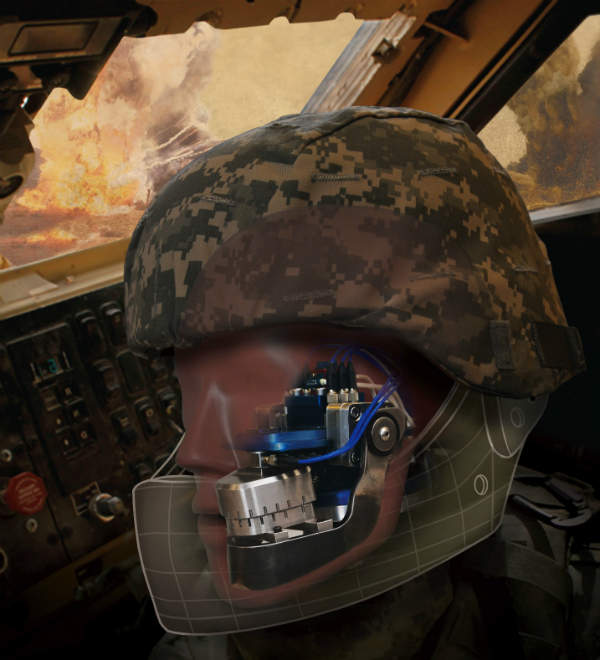
Biokinetics and Associates
Blast, Ballistics and Blunt Impact Soldier Protection
Biokinetics advances soldier protection with biomechanical engineering consulting, test and evaluation services and research-oriented products.
Subscribed
You have successfully submitted your enquiry. Someone from our company will respond ASAP
About Us
Biokinetics advances soldier protection with biomechanical engineering consulting, test and evaluation services and research-oriented products. Biokinetics leverages its core knowledge of injury mechanisms, threat loads and bodily response evaluation towards better product specifications and test standards to ensure the effectiveness of current and emerging protective technologies.
We work with international government agencies responsible for acquisitions and R&D, industries for body armor and armored vehicles as well as regulatory agencies of personal protective equipment (PPE).
Protective equipment development for soldier protection
Military ballistic vests, combat helmets and blunt impact attenuating systems must meet stringent performance and operational requirements. Optimisation of these protective equipment technologies is achieved through understanding injury mechanisms and human tolerances, in parallel with trauma management materials, production processes and operational requirements.
Ballistic helmet developments for injury reduction
Once upon a time, a ballistic helmet’s singular role was to prevent fragmentation penetration. That time has long past with new demands being made for enhanced blunt force protection, behind armour blunt trauma (BABT) mitigation and managing blast effects involving a combination of overpressure, projectiles and blunt force impact. Biokinetics works towards finding a balanced approach to injury reduction, while addressing human factors and operational requirements.
Military injury mitigation and analysis
Military land, air and sea servicemen and women are exposed to a host of threats including blunt force trauma, stab penetrating wounds, ballistic and blast-related effects. Mitigating these injuries requires an understanding the threat itself, the interaction of that threat with the body and the body’s physical response and threshold for injury.
For over three decades, Biokinetics has focused on advancing new injury assessment metrics, developing and testing personal protective systems and creating product specifications and performance standards.
Ballistic body armor and testing and evaluation
Biokinetics operates multiple full-service ballistic test laboratories, housing state-of-the art firing, loading and velocity monitoring systems. We can launch many types of bullets and fragmentation threats for all types of body armour including soft, hard and composite systems.
Projectile and target interactions are analysed using high-speed video, human body surrogates and a host of other devices developed specifically for human injury analysis. Testing is available to industry standards or customer specifications.
Ballistics vehicle armor and structural protection system testing
Biokinetics conducts ballistics testing and evaluation of armor plate and transparent armor for vehicles in accordance with industry standards.
The firm also evaluates ballistics protection on structural components and systems for military and industry applications. Our capabilities include kinetic energy rounds up to 14.5 mm and fragment threats up to 12.7 mm.
Blunt impact protective equipment testing and evaluation
In recent military conflicts, blunt trauma injuries result from direct impact with an object or indirect secondary blast effects. Realistic assessment of protective equipment is critical to soldier survivability. Biokinetics has extensive experience in assessing the effects of blunt trauma on the human body.
We evaluate the performance of personal protective equipment (PPE) to standard and custom specifications for industry, government and regulatory agencies. Our technical support team will meet your needs whether it be testing equipment design and fabrication, custom sensor application or injury analysis. We can assist with new product development, certification verification of existing products and quality assurance programs.
Blast protection testing and evaluation for military
With the widespread use of improvised explosive devices (IEDs) in modern military conflict the need for improved blast protection for the mounted and dismounted soldiers has become critical. New devices and protective systems are rapidly advancing to mitigate blast loading. With the use of instrumented manikins and relevant injury analysis, Biokinetics can measure the effectiveness of these devices via controlled laboratory simulations or full-scale blast testing.
Advanced test equipment for military protective products
Biokinetics offers a wide assortment of specialised testing equipment used to measure the performance of protective products from helmets to ballistic plates and even blast attenuating floor mats. These include blunt impact, retention, compression resistance, CG and inertial properties for head protection systems, high speed pneumatic impactors for assessing bodily trauma and several head, torso and extremity surrogates for assessing blunt force trauma and BABT.
We can reproduce real world ballistic and blast hazards or adhere to those described in recognised product performance standards. Turnkey or custom solutions will be provided to meet your needs with proven designs and expert technical support.
Human effects of Non-Lethal Kinetic Energy Ammunition
Law enforcement and military communities have been trying to quantify the terminal effects of Non-Lethal Kinetic Energy ammunition. However, due to limited standardization and understanding of the human responses, evaluation methods and performance levels have varied considerably.
To address these limitations, Biokinetics has developed a comprehensive test protocol (BAL-NLKEA-01) for assessing ammunition blunt trauma including impact force, transient deformation, skin perforation and targeting precision.
Contact Details
Website
Email Address
Address
Ottawa,
K1H 1E1,
Ontario,
Canada







